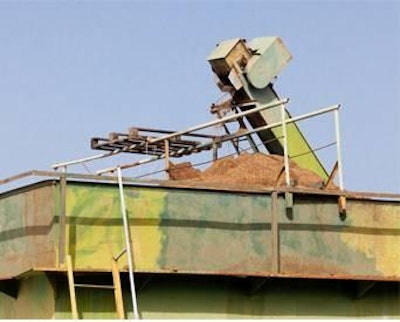
Olives are grown in many areas of the world with a climate similar to that found in the Mediterranean region. The solid by-product from the olive oil industry (olive cake) is usually discarded or fed to ruminants. Very little is used in diets for pigs, although it is a very inexpensive source of energy.
In a recent research trial, the effects of olive cake on digestibility, growth performances, carcass, meat and fat characteristics were studied in sixty gilts, weighing 70 kg at 126 days of age. Increasing levels of olive cake (0, 50, 100 and 150 g/kg of feed) were included in the diet by replacing the same proportion of barley. The trial lasted 35 days, and animals were slaughtered at about 97 kg body weight.
Daily feed intake increased (P=0.04) and daily gain tended to increase (P=0.06), both quadratically, with increasing olive cake inclusion reaching maximum values at 100 g olive cake per kg feed. The daily apparent digestible energy intake also increased quadratically (P=0.04) on increasing dietary olive cake content. The feed conversion ratio was not affected by dietary treatments. Also, the apparent organic matter digestibility tended to decrease quadratically (P=0.06) and energy digestibility decreased linearly (P<0.04) as the level of dietary olive cake level increased.
The experimental treatments had negligible effects on carcass and meat characteristics; however, the inclusion of olive cake increased quadratically (P=0.04) carcass weight and decreased linearly (P=0.02) fat depth measured at the gluteus medius muscle. The experimental treatments did not modify the total polyunsaturated fatty acids profile of subcutaneous fat, but increasing levels of olive cake promoted a linear reduction (P=0.01) of total saturated fatty acid proportion and a linear increase (P=0.02) of total monounsaturated fatty acid percentage, especially that of C18:1 (P=0.01).
From the above, it can be concluded that olive cake might be included up to 100 g/kg in finishing pig diets improving some aspects of growth performances and carcass quality and also providing a healthier fatty acid profile in fat tissues. It should be noted, however, that the initial by-product had to be partially dried and depitted for the trial. Thus, some further work is required in terms of ingredient technological aspects before olive cake can be used on a commercial basis.

















